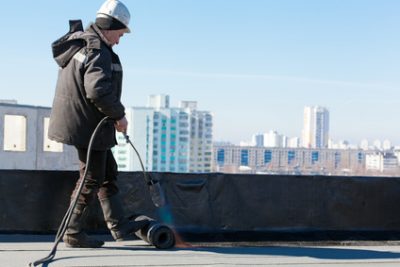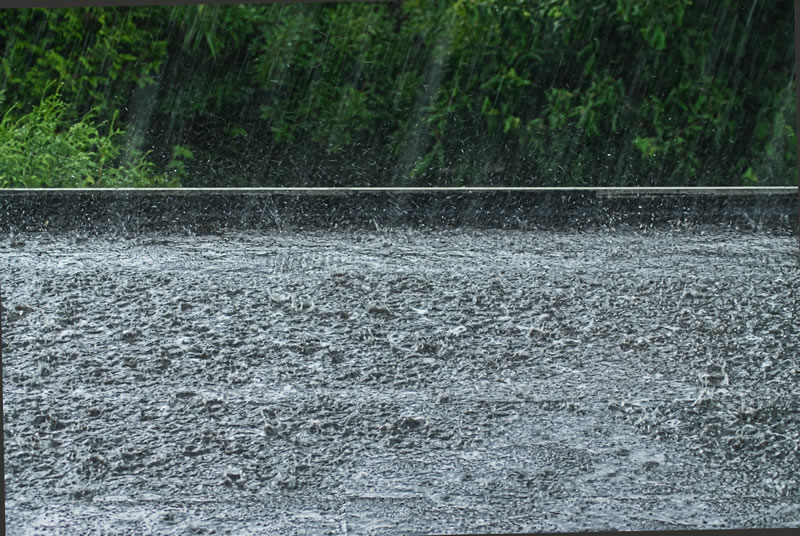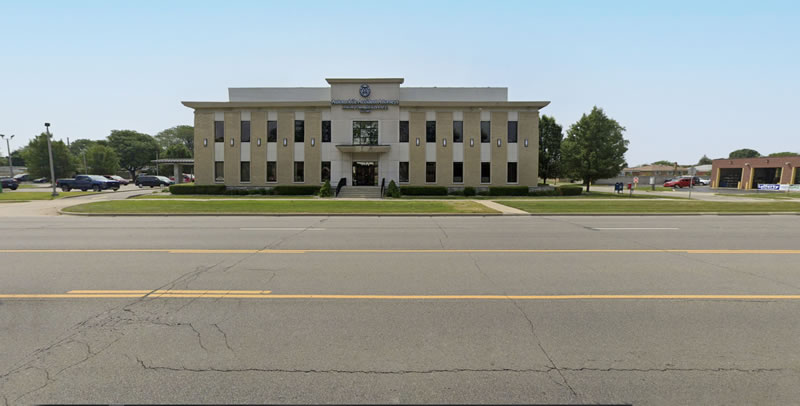Are You Wondering, “How Long Should a Commercial Flat Roof Last?” Luckily, you have come to the right place! Understanding how long your roof should last allows for proper planning for its future maintenance; will repairs need to be made soon, or may a complete roof replacement be required? Our experts are here to provide answers!
Many factors can determine how long a flat roof lasts. This includes its materials, installation quality, upkeep (i.e., regular checks and fixes), and environmental conditions it must endure. All these aspects could contribute to giving or shortening its life; sooner replacement could even become necessary depending on which route it goes down.
But roofs serve more than one function. In addition to keeping rain and snow at bay, they also help regulate heat in winter and air conditioning in summer – and can impact how much money is spent heating or cooling the building, moving how long it lasts too! Therefore, their lifespan affects wallets too!
So if you want to sell or rent out your building, knowing its lifespan could make your property more desirable to potential buyers or tenants. Knowing its lifespan could be crucial in the long run.
Stay with us as we discuss each factor individually in the following sections. We’ll help you understand what to expect from a commercial flat roof installation and how to maintain its condition as long as possible – let’s get going!
Understanding Commercial Flat Roofs
Before we get down to discussing how long a flat roof should last, let’s first make sure we all understand what we mean when we refer to a “commercial flat roof.” A commercial flat roof doesn’t look relatively flat due to a slight slope for water drainage purposes. Still, it remains visually pleasing enough for most buildings like warehouses, factories, or offices to use one.
Why choose a flat roof for a commercial building? Well, there are several factors. First off, they’re more cost-effective for larger structures because they are easier and faster to install than other roofing styles; additionally, they provide extra space for things such as HVAC units, allowing the rest of your building more usability.
You can use various materials on a flat roof, such as TPO (thermoplastic polyolefin), EPDM (ethylene propylene diene monomer), and PVC. Each has advantages and disadvantages, which we will explore more fully later.
Remember when choosing materials for a flat roof: the choice is only half of the story if installed improperly; therefore, an experienced roofing contractor with solid knowledge in this field should be hired to install them correctly.
Commercial flat roofs are a cost-effective and efficient choice for many businesses. But to get an excellent flat roof that will stand the test of time, experts must choose and professionally install suitable materials. In our next blog, we’ll look at each type of material available and how it could impact its lifespan.
Common Flat Roof Materials and Their Lifespans
This section reviews some of the most popular materials used for commercial flat roofs and how each may impact its lifespan. It should be remembered that material lifespan depends heavily on installation methods, maintenance regiments, and local weather conditions.
First up is the TPO roofing membrane. TPO is a single-ply membrane known for being highly durable and weatherproof; easy installation/repair makes this choice cost-effective over time; on average, it may last 15-20 years with proper care & maintenance!
EPDM stands for “ethylene propylene diene monomer,” an extremely durable rubber roofing material. EPDM’s flexibility makes it suitable for weatherproofing against storms and other harsh conditions; installation is relatively simple; an EPDM roof typically lasts 20 to 30 years, making it an excellent long-term investment option.
PVC (polyvinyl chloride) roofing materials offer exceptional fire, wind, and chemical resistance compared to TPO or EPDM alternatives. While installation costs might be higher, their longevity could make their initial investment worthwhile over 20-30 years.
So there you go! These are the most widely-used materials used for commercial flat roofs, along with how each can impact its lifespan. In the next section, we will also cover how installation affects the longevity of your roof – don’t go away just yet!
The Importance of Proper Installation
So far, we’ve covered what a commercial flat roof is and some of the materials it can be constructed from; now, let’s discuss another essential factor determining how long a roof lasts: installation. No matter how good-quality materials may be used on a top, if installed incorrectly, you could end up experiencing problems much sooner than expected.
One of the critical aspects of installing a flat roof is ensuring proper drainage. Due to their less steep angles, water may accumulate more quickly on these roofs and lead to leaks or other forms of damage if left standing – to avoid this, your roofer should develop a drainage system that redirects excess liquid away from your building.
Your roof must also be adequately sealed and insulated to avoid mold growth and heat loss, which could reduce lifespan and increase energy bills.
Roofing materials must be installed carefully; even minor errors, such as misplaced fasteners, could result in leakage issues later. Therefore, you must hire an experienced roofing contractor with a solid reputation.
Remember that although the initial cost may seem higher, properly installing your roof could save money in the long run. A properly installed roof will last longer and need fewer repairs – meaning less money and stress for you!
We will now cover how regular maintenance can extend the lifespan of your commercial flat roof.
Maintenance – Your Flat Roof’s Best Friend
Now that we’ve discussed the significance of correct installation let’s turn our attention to another vital component in prolonging the lifespan of a flat roof: regular maintenance. Preventative measures can go a long way toward keeping it looking its best for years!
Undergoing regular roof inspections is critical. At least twice annually or following any major storm, have your roof professionally inspected by a trained inspector to detect signs of wear or damage, such as cracks, blisters, or loose seams that might need repair later. By catching problems early enough and getting them taken care of faster than last, repairs could save both time and money in rehabilitation costs.
Next, ensure your roof remains tidy. Leaves, branches, and debris can accumulate on roofs over time and lead to leaks or other forms of damage; regular roof cleaning will help avoid this scenario while making it easier to detect potential issues as soon as they arise.
Proactive repairs are also crucial. If a roof inspector detects any issues, don’t wait – take prompt action right away to rectify them, as the longer you let problems fester, the worse they’ll become, and over time, timely fixes are often less expensive than major overhauls.
Consider investing in a professional maintenance plan. These plans typically offer inspection, cleaning, and repair services from your roofing company, taking the hassle and stress out of caring for your roof over time. This will save time and stress and keep it in excellent shape longer!
Environmental Factors and Your Flat Roof
Now that we’ve covered materials, installation, and maintenance – let’s turn our attention to something beyond your control – the environment. Climate and weather in your location may affect how long your commercial flat roof lasts.
Heavy rain and snow can place immense strain on any roof, particularly flat ones that don’t feature as steep slopes as other options and therefore don’t shed water as efficiently. If your area experiences much precipitation, pay special attention to its drainage system.
As much as we enjoy living under the sun, its exposure can devastate roof materials over time, leading to cracks and leaks in cracks or leaks. If you live in a mainly sunny region, opt for TPO or PVC materials that resist UV rays for maximum protection from UV damage.
High winds can also pose a threat to flat roofs. They can strip away roofing materials or cause debris to strike the surface directly, so if your building is exposed, be sure to secure all materials appropriately and monitor for potential issues after any significant storms have passed through.
Remember that extreme temperature changes can cause your roofing materials to expand and contract, potentially causing permanent damage over time. If your area experiences this weather, ensure your materials can withstand these fluctuations without succumbing to injury over time.
Next, we will explore how the type of building used may also impact the lifespan of a flat roof. Read on!
Building Usage and Flat Roof Lifespan
Now that we have discussed the environment, let’s focus on your building itself – how you use your commercial flat roof can affect its lifespan!
First and foremost, foot traffic on your roof is a significant contributor. Accessing it regularly for HVAC system or equipment maintenance could cause wear and tear that leads to premature roof deterioration. Ensure anyone accessing it understands how to access it without causing damage and protect high-traffic areas with walk pads.
The interior environment of buildings also matters greatly; generating too much heat or moisture can harm roof underlayers, leading to blistering or other damages requiring good ventilation to solve these problems.
Weight load on a flat roof can significantly impact its lifespan. When installing heavy equipment on your roof, ensure your roofing design accommodates it – overloading can cause structural damage and shorten its life considerably.
Next, we will examine some indicators indicating your flat roof might need replacement.
Recognizing When Your Commercial Flat Roof Needs Replacement
After discussing how to extend the lifespan of your flat roof, let’s now discuss when it is time for a replacement. Let’s consider some indicators that it might be time to get rid of your current one and replace it. Let’s also talk about some warning signs to watch for.
- Persistent Leaks: If your roof leaks despite repairs, it might be time to consider replacing it. Leaks can lead to severe structural damage over time; thus, it’s wise not to ignore such leaks.
- Ponding Water: If water has been pooling on your roof, it could indicate that your drainage system is not operating effectively or there are slope issues. Over time, ponding can damage roofs and lead to leaks.
- Visible Damage: Cracks, blisters, or tears in the roofing material could be telltale signs that it has reached the end of its useful life and that a replacement might be in order. If extensive damage occurs, then replacement might be in order.
- Signs of High Energy Bills: If your energy bills suddenly increase, this could be a telltale sign that your roof isn’t providing adequate insulation and could benefit from being upgraded with more energy-efficient materials to reduce costs. A more energy-efficient roof could bring significant cost savings!
Once we’ve discussed the signs that your flat roof might need replacing, let’s finish by exploring ways you can extend its lifespan and extend its use for longer.
Ensuring Longevity for Your Commercial Flat Roof
At its core, a commercial flat roof’s longevity depends on three key elements: materials used in its installation and how well maintained throughout its lifespan. To help ensure you make the most of your flat roof investment, here is a brief review of what we have learned:
- Material Selection: When choosing materials for your water system, keep this in mind: different options have different lifespans – PVC, TPO, and EPDM all offer distinct advantages and disadvantages; consider your specific circumstances and select one which best meets them.
- Quality Installation: Even top-of-the-line materials won’t last as long without being installed correctly, so always consult an experienced roofing contractor to ensure it gets done right.
- Maintenance Checklist: Don’t wait for problems to arise before taking action; regular inspections and prompt repairs can detect minor issues before they become more significant.
- How to Know It’s Time: Recognize the signs that it may be time for a replacement roof: persistent leaks, ponding water accumulation, visible damage, and higher energy bills are all indicators that it may be time to buy new.
Remember, your commercial flat roof is an investment worth protecting, so treat it carefully to get the best return. Need help? Reach out – we are always available and happy to assist!
Get Expert Assistance from A & L Flat Roof Repair
If you are located in Metro Detroit and require expert care for your commercial flat roof, don’t hesitate to contact A & L Flat Roof Repair today. With years of experience and numerous satisfied customers under our belts, we pride ourselves on being among the premier commercial roofing companies here.
At our team, we understand that your commercial flat roof is more than a part of the building; it’s an investment in its longevity that can significantly impact operational efficiencies and expenses for your business. With us as your service providers, expect top-quality services that ensure the maximum longevity of your investment.
From selecting the appropriate roof material and installation services to conducting regular maintenance checks and handling replacement projects seamlessly and stress-free, our team can meet all your roofing needs. When it’s time for replacement work to occur, our experienced staff will guide you through every step of the process and ensure an easy transition.
Remember, the life expectancy of your commercial flat roof doesn’t just depend on its material or installation; its lifespan also hinges on how well it’s maintained afterward – that’s where we come in!
Do not wait for leaks or damages to surface before taking action; call us now at (586) 777-1477 to book an appointment with one of our experts and ensure your commercial flat roof lasts as promised! Trust us with its care; it won’t disappoint over time.
Additional Resources
Here are a few resources that could provide more detailed information about commercial flat roofs:
- National Roofing Contractors Association (NRCA) – Commercial Roofing
- Building Owners and Managers Association (BOMA) – Roofing Resource Guide
- U.S. General Services Administration (GSA) – Flat Roofing
- National Association of Home Builders (NAHB) – Selecting the Right Roof
- Energy Star – Reflective Roofing Products
Please be aware that while these resources contain excellent information, they might not reflect A&L Flat Roof Repair’s specific practices or standards for each project. Consult with a professional to better understand what’s required of your roofing job.





